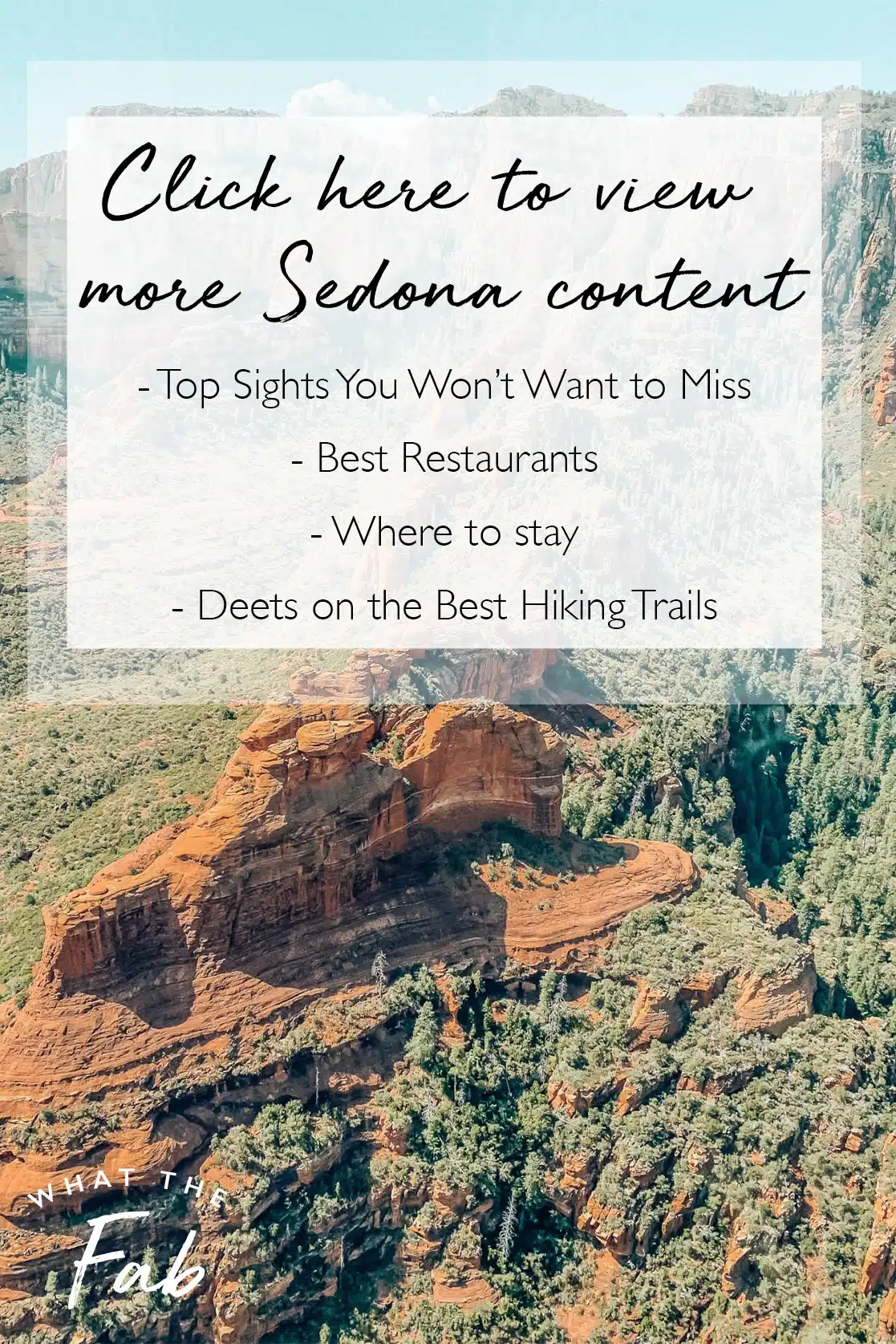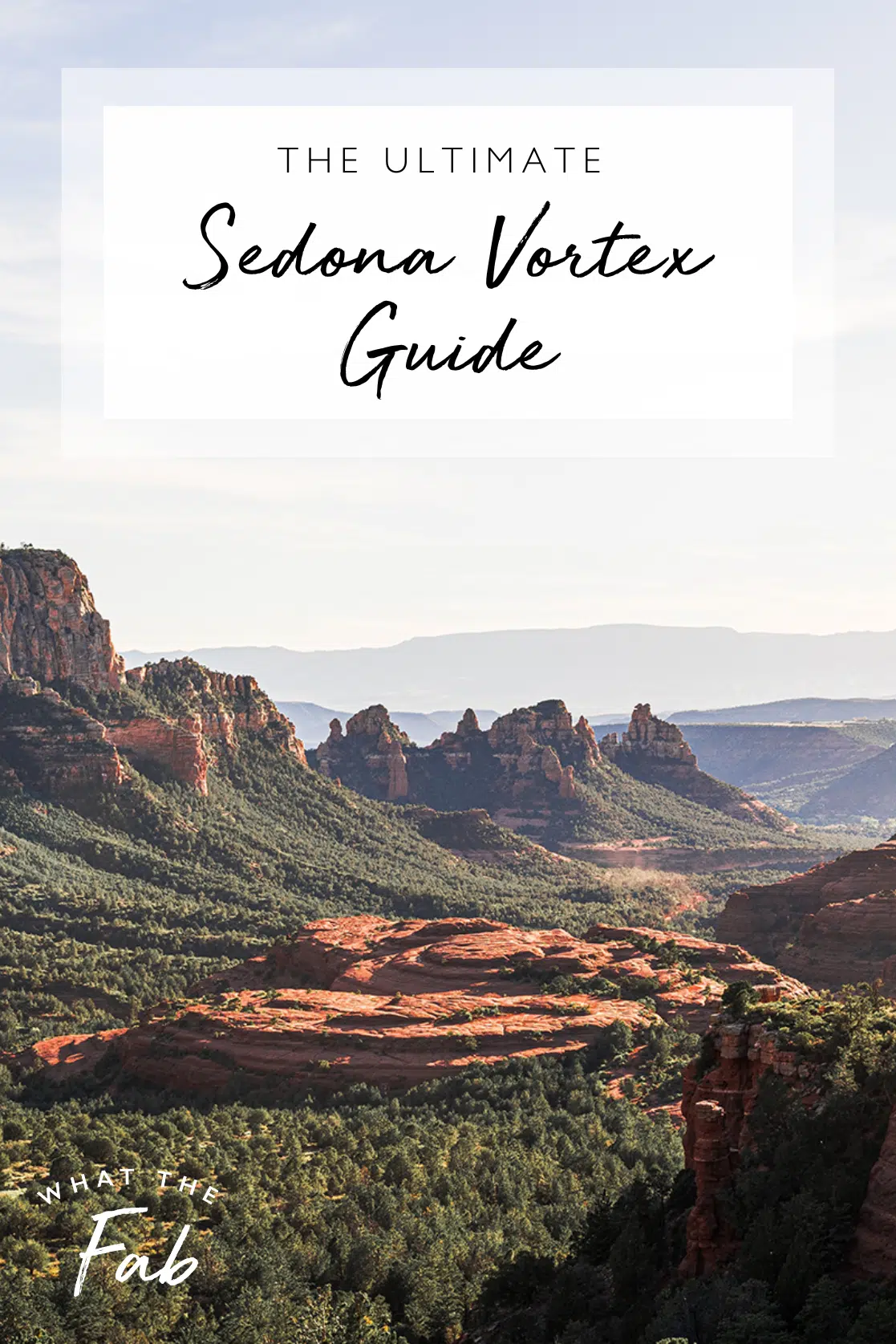
When you think about taking a trip to Sedona the first things that probably come to mind are wineries, golfing, and spas—but what about the Sedona vortex sites?
I had never heard of Sedona vortexes until visiting this amazing part of the U.S. but I’ve been obsessed with researching them ever since.
Book my fave Sedona activities through GetYourGuide below:
If you want to learn more about these mysterious vortexes, where they’re located, and how to visit them yourself, keep reading for my Ultimate Sedona Vortex Guide!
Pssst, heading to Sedona? Don’t miss these travel guides to help you plan your trip!
Best Sedona Restaurants with a View
Ultimate Sedona Vortex Guide
What is a Sedona vortex?
You’re probably asking yourself, “what the heck is a Sedona vortex?”
Well, one of the reasons Sedona is often associated with relaxation and yoga retreats is that some people believe the town is home to areas with swirling waves of positive energy—also known as Sedona vortexes!
The vortex sites are said to contain special spiritual energies that can help heal and restore balance in people’s lives if they’re open and willing to receive them.
According to some, these energy vortexes are places of great power, and many believe that the energies can have a profound effect on those who visit them.
I know that might sound a bit “woo” and be a lot to wrap your head around—trust me, I fell down a deep Sedona vortex rabbit hole when I first found out about all this because it’s SO interesting!
Where are the Sedona vortex sites?
There are four major Sedona vortex sites—Airport Mesa, Bell Rock, Cathedral Rock, and Boynton Canyon—and each is said to have unique properties.
I’ll also cover the four smaller vortexes you can find in Sedona—Red Rock Crossing, The Chapel of the Holy Cross, Schnebly Hill, and West Fork Trail.
Some of these areas require a bit of hiking so make sure to dress appropriately and come prepared with snacks, water, and sunscreen.
Many of the Sedona vortex sites can be accessed by popular hiking trails, so it’s easy to explore them on your own and visit multiple sites in one day.
Keep in mind a lot of the hikes in Sedona require a Red Rock Pass—you can pick up a daily pass for $5 or a weekly pass is $15.
If you want to learn more about these vortex sites and their specific powers, there are plenty of Sedona vortex tours where a guide will teach you about each site as you hike to them.
4 Major Sedona Vortex Sites
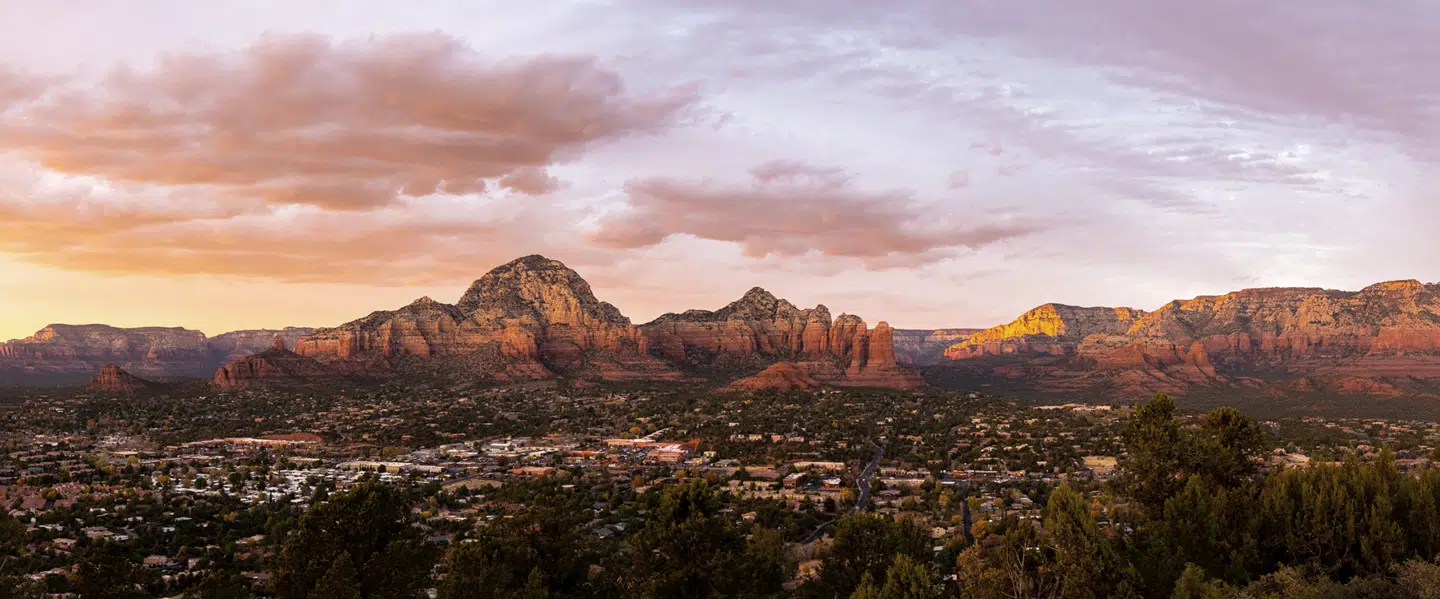
Airport Mesa
Airport Mesa is probably the most popular Sedona vortex thanks to its easy accessibility and proximity to town.
If you’re looking for an adventure and are up for some hiking you can hop on the popular Loop Trail, a moderate 3.2-mile hike that offers stunning views of the surrounding desert and spectacular red rock formations.
Don’t feel like hiking? No worries—there’s also a short path called the Overlook Trail that takes you right to the vortex, which is on a small mesa overlooking Sedona.
Once you reach the viewpoint you’ll experience breathtaking views of Sedona’s iconic red rocks that are especially beautiful at sunrise and sunset.
Many have said that spending time at the Airport Mesa vortex left them feeling rejuvenated and revitalized.
Even if you’re not fully convinced about the idea of Sedona vortex sites, Airport Mesa is a beautiful area for hiking, photography, yoga, and meditation, so I recommend visiting it.
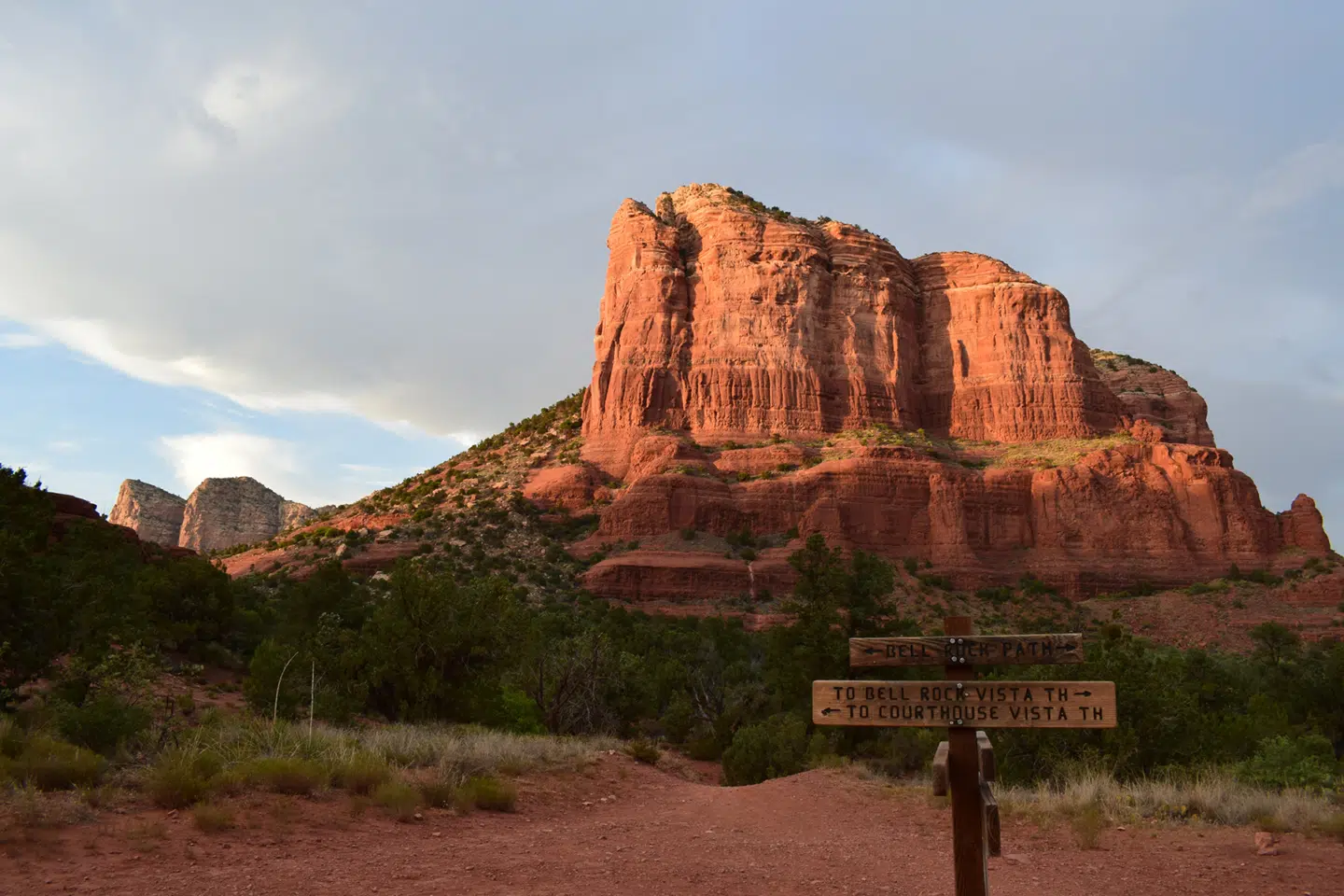
Bell Rock
Bell Rock is one of the most iconic rock formations in Sedona and another top vortex site.
There are a few hiking options at Bell Rock depending on how much of a challenge you’re up for.
The hike from Bell Rock Trailhead at the parking lot to the base of this giant bell-shaped rock is just 0.2 miles. From there, you can decide whether to keep climbing up Bell Rock or hang out at the base.
Another option if you want a longer hike is the Bell Rock Pathway, a 3.5-mile-long trail that takes you past Bell Rock, Courthouse Butte, and other amazing rock formations.
Bell Rock is said to be the most powerful Sedona vortex, so it’s recommended to spend a good amount of time there relaxing and soaking up the powerful energies.
The 360-degree views from Bell Rock are some of the best in Sedona, and it’s easy to see why so many people come here to clear their heads and get in touch with nature.
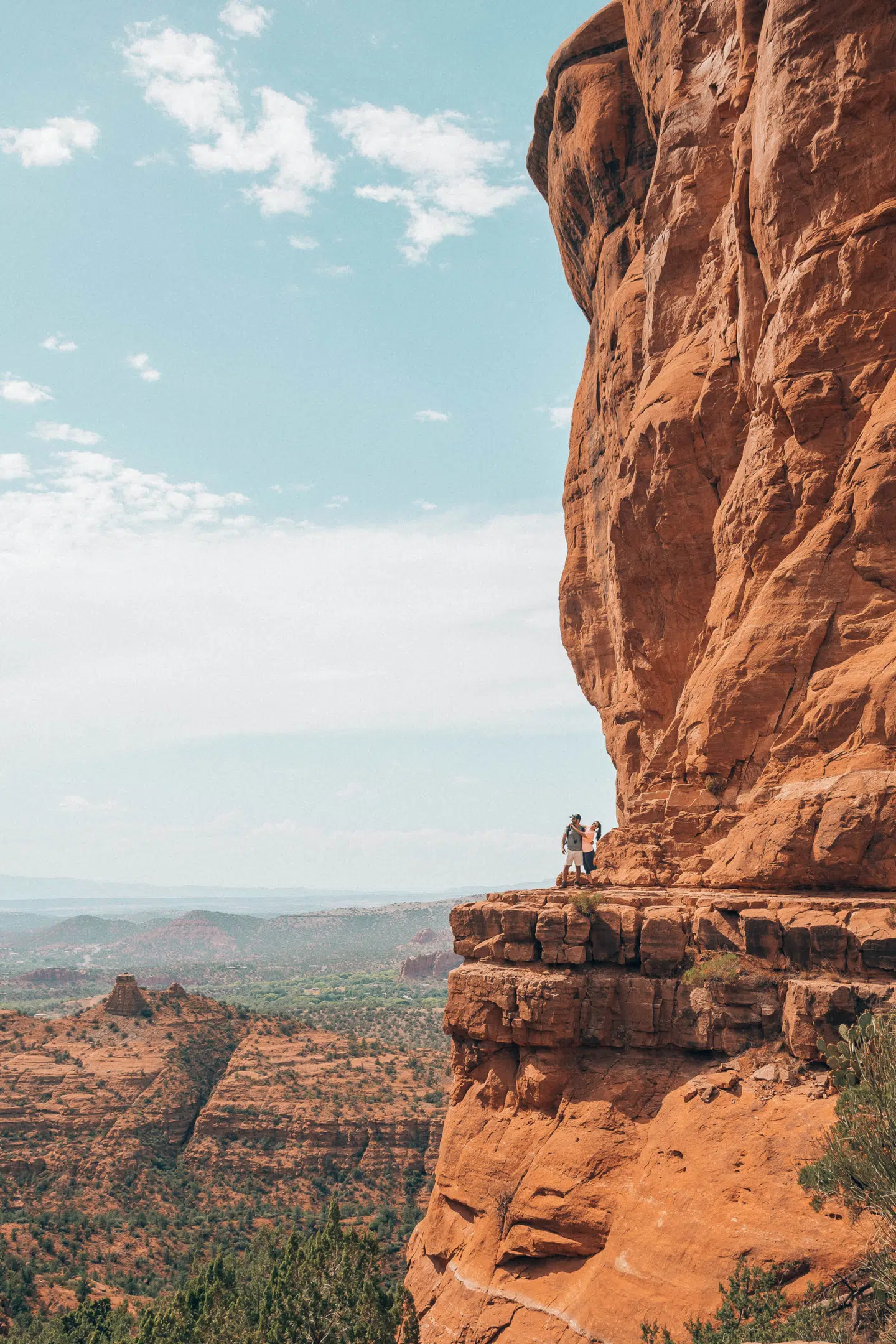
Cathedral Rock
The next of the Sedona vortex sites is Cathedral Rock, where many have claimed to experience spiritual awakenings and epiphanies.
The energy here is considered gentle, grounding, and calming, so it’s a great place for vortex newbies to start connecting with their inner selves.
The Cathedral Rock Trail, a 1.4-mile out-and-back hike, is the most popular way to reach the vortex site.
Look out for cairns, or small piles of stacked rocks, along your journey—they’re used to mark the trail and serve as landmarks to help guide your way.
The first part of the trail is pretty easy and flat, but you will have to do quite a bit of scrambling toward the end. It’s worth it though once you see those jaw-dropping views of Sedona from the top.
There are so many amazing rock formations along this hike that I highly recommend bringing a camera to snap some pics. I also like how private this Sedona vortex feels compared to some of the other sites, especially if you visit around sunset.
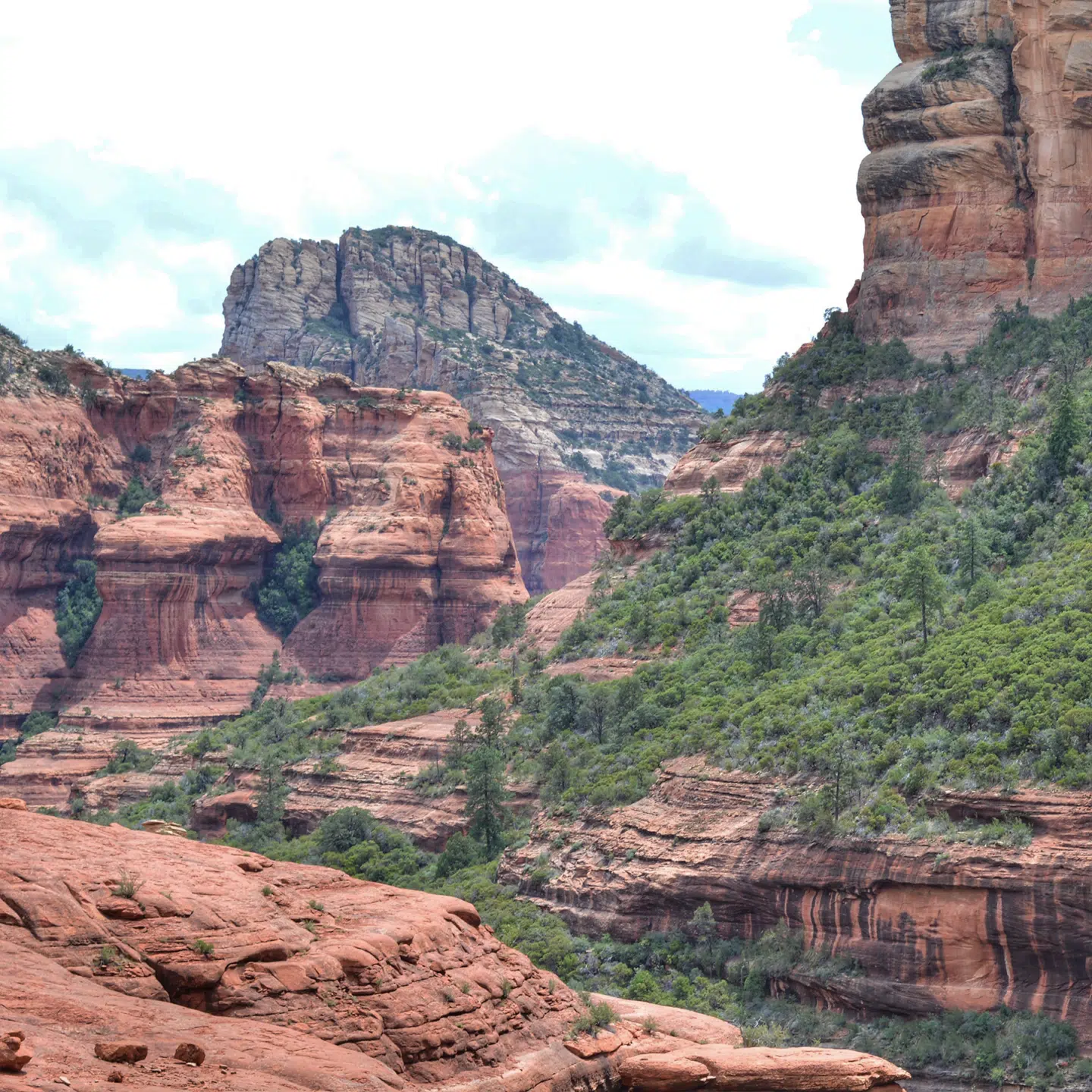
Boynton Canyon
The last major Sedona vortex site we’ll be talking about is Boynton Canyon in Coconino National Forest.
After parking at the trailhead, hop on Boynton Canyon Trail for a few minutes until you reach Boynton Vista Trail, a short and relatively easy 1.1-mile roundtrip hike that will lead you to the vortex.
There’s some debate over the exact location of the Boynton Canyon vortex, with some saying it can be found by the Kachina Woman rock formation and others claiming it’s on an unnamed mesa.
Either way, you can feel the powerful vortex energy throughout the entire Boynton Canyon area as soon as you arrive at the parking lot.
Boynton Canyon is a great spot for connecting with the earth and your inner self. This Sedona vortex is said to have a balanced energy that provides clarity and can also help with physical healing.
Many say that the Boynton Canyon vortex has a restorative and calming energy, and I agree the area is super peaceful and relaxing.
4 Minor Sedona Vortex Sites
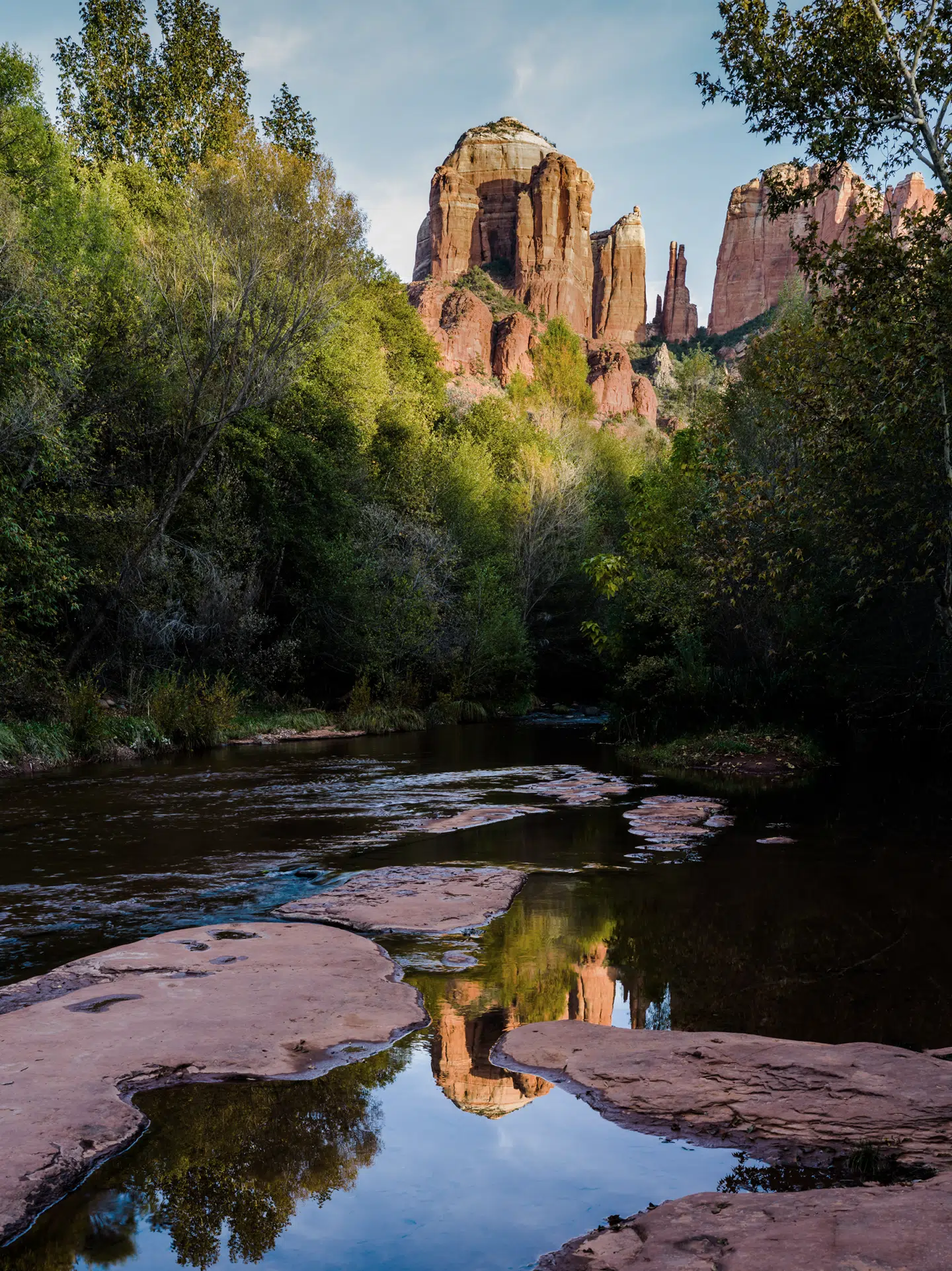
Red Rock Crossing
The Red Rock Crossing Sedona vortex is not as popular as other major sites because the energy here is said to be less powerful. Still, the vortex site is super gorgeous and worth a visit in my book.
One of my favorite parts about Red Rock Crossing is it runs along Oak Creek, so there’s a swimming hole where you can jump in and cool off mid-hike! You’ll also get some incredible views of Cathedral Rock along the way.
The easiest way to access Red Rock Crossing is by parking at the Baldwin Trailhead and following Verde Valley Road until you spot the creek and swimming area. From there, hike along Red Rock Crossing Trail for about a half mile before hopping on Templeton Trail for another quarter mile, and then you’ve arrived.
You’ll only have to walk 10-15 minutes in total, so this vortex site is great if you want something easily accessible and not too strenuous.
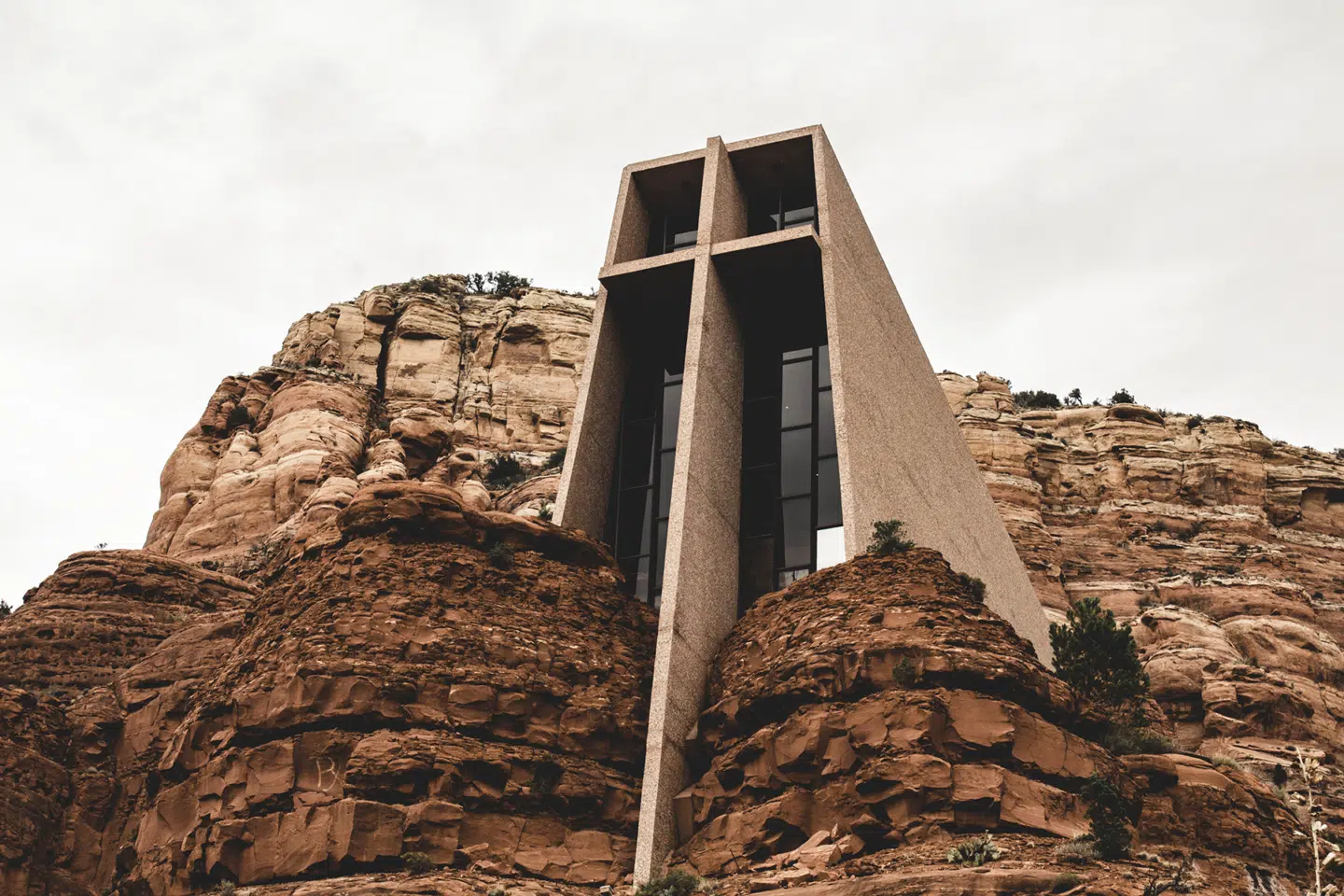
The Chapel of the Holy Cross
Next up is The Chapel of the Holy Cross, a super unique church built in between some gorgeous rock formations.
The architecture of the church is very interesting so it’s no surprise The Chapel of the Holy Cross is a popular Sedona tourist destination.
You can go inside the church to admire views of Sedona through stained-glass windows, or just wander the area on your own.
A lot of people say they feel a strong sense of peace and purpose after visiting The Chapel of the Holy Cross because it’s a very spiritual place to do some thinking and self-reflection.
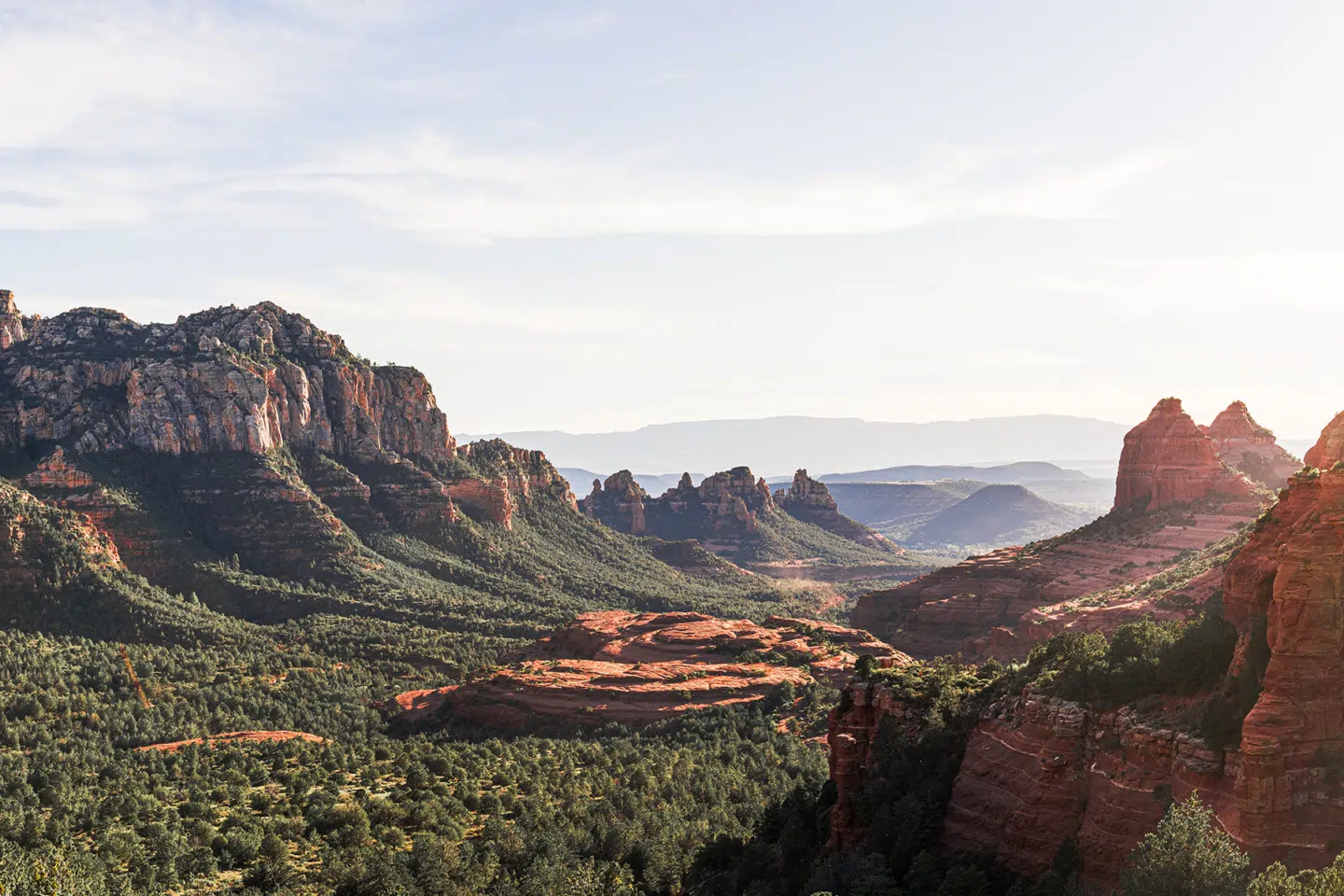
Schnebly Hill
The Schnebly Hill vortex is perfect if you want to get off the beaten path a bit, especially since you’ll need an offroad vehicle to access it!
You can find this Sedona vortex in Oak Creek Canyon, a gorgeous area that many call the cousin of the Grand Canyon because of its natural beauty.
There are amazing views of Sedona and the canyon from Schnebly Hill, and the vortex is a great place to release negative thoughts and emotions so you can begin to move forward in a positive direction.
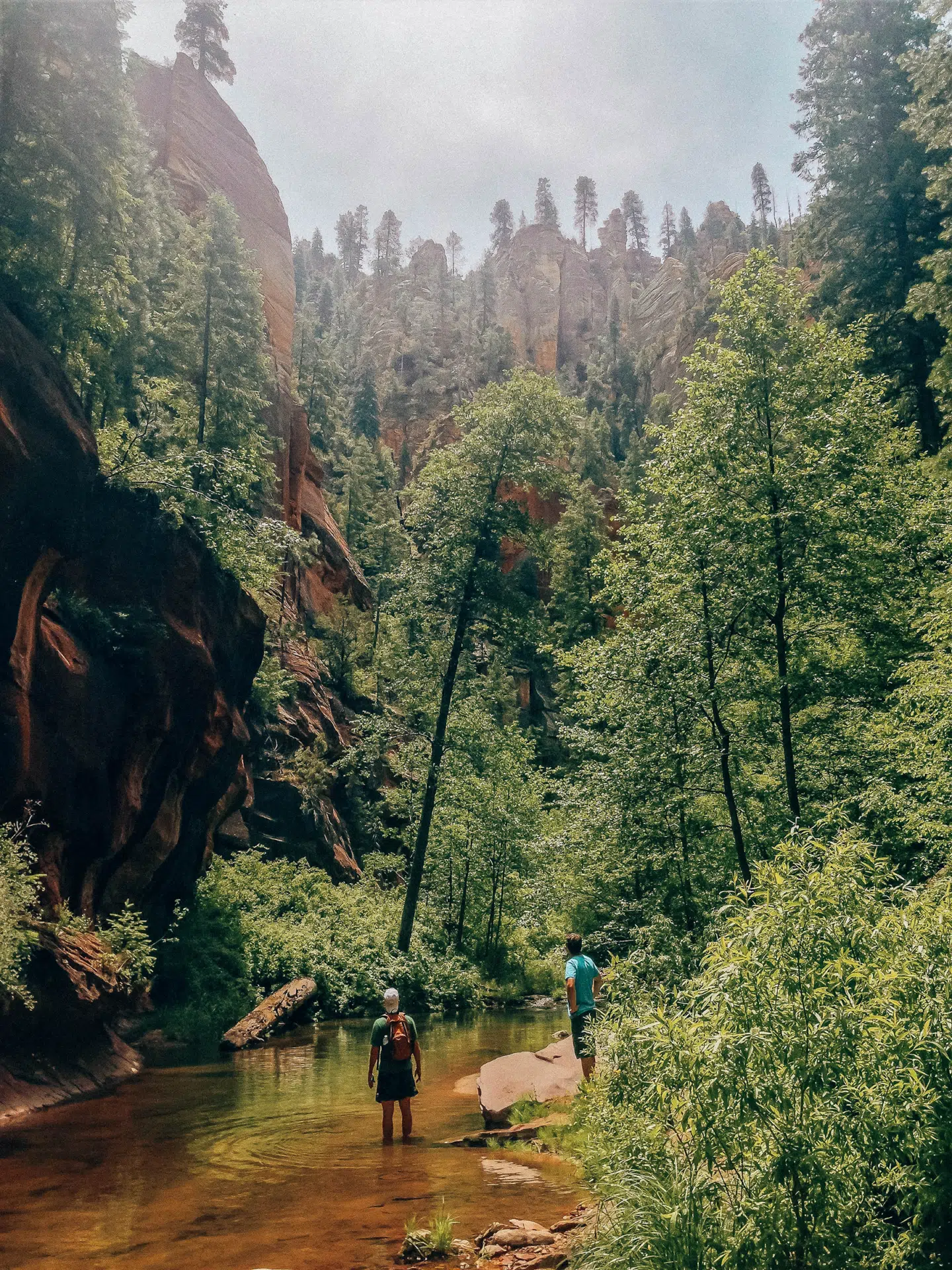
West Fork Trail
The last minor Sedona vortex site is West Fork Trail, about ten miles north of Sedona.
This vortex is much less popular than others that are closer to Sedona’s city center, so you can expect fewer crowds and more privacy. It also follows Oak Creek so you can easily visit Red Rock Crossing on the same trip, too.
The full hike is over 6.5 miles roundtrip, but you can walk for as long or short as you like and still reap the benefits of the vortex’s energy.
Make sure to wear appropriate shoes because you’ll be crossing the river 13 times if you hike the full trail!
I hope this Ultimate Sedona Vortex Guide is helpful as you plan your trip. Let me know in the comments below or on Insta (@wtfab) if you’ve been able to visit any of the Sedona vortex sites yourself!
You can find more Sedona guides and recommendations here.
The Best Things to Do in Sedona
Best Sedona Airbnbs for an Incredible Sedona, AZ Vacation
Sedona Travel Guide: An In-Depth Sedona Itinerary
Best Sedona Restaurants with a View
11 Gorgeous Sedona Bed and Breakfast Picks
FAQs
A vortex is said to be a powerful place of swirling positive energy that can provide physical, emotional, and spiritual healing.
There are four major and four minor Sedona vortex sites.
Some of the most well-known and powerful Sedona vortex sites are Airport Mesa, Bell Rock, Cathedral Rock, and Boynton Canyon.

Elise Armitage is an entrepreneur and founder of What The Fab, a travel + lifestyle blog based in California. At the beginning of 2019, Elise left her corporate job at Google to chase her dreams: being an entrepreneur and helping women find fabulous in the everyday. Since then, she’s launched her SEO course Six-Figure SEO, where she teaches bloggers how to create a passive revenue stream from their website using SEO. Featured in publications like Forbes, Elle, HerMoney, and Real Simple, Elise is a firm believer that you can be of both substance and style.

